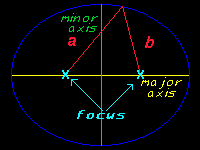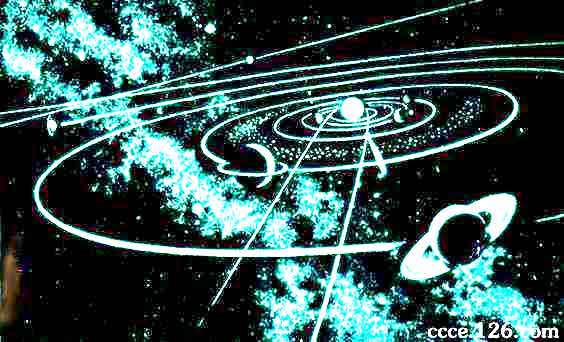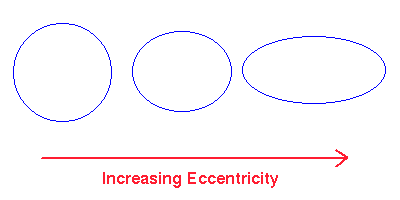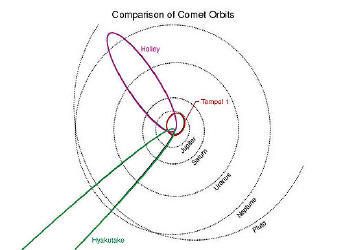|
Orbit Theory 2 |
| Planets (mass) will orbit
another body when the force of gravity is equal to the force of
acceleration (centripetal force) that exists between the 2 bodies. Orbiting bodies follow an elliptical shaped orbit about the more massive body (in our  case the Sun). case the Sun).
In the early era of astronomy it was thought that the orbits were circular, as that was regarded as being more "perfect". Most planets orbit in an elliptical orbit where the ratio of major to minor axis is greater than but close to one (almost circular orbit). The greater the greater the eccentricity of an orbit the more elliptical it is.
m = minor axis
INTERACTIVE ORBITER give this interactive
tool a try and change the variables to observe the affects. Why are comets
moving so fast when they approach the sun?
|

b) Why does Mercury have the fastest period of revolution? |
 a) Why does the Sun appear to stay in one of the focal points while the planets move about the ecliptic? |
 Clik
for a simulation: drawing an ellipse Clik
for a simulation: drawing an ellipse
a) Some comets arrive in from
outer space and approach the Sun but continue back out to space rather
than into orbit explain why?
> to stay over the same spot on earth, a geostationary satellite also has to be directly above the equator > Shuttle's orbit is always
inclined to the equator by at least
28.5 degrees. Given this and the Shuttle's relatively low orbit,
getting a satellite from its deployment orbit to its final geosynchronous
orbit takes an Inertial Upper Stage (IUS) for a boost, and something
called a
Hohmann transfer.
|

 increased?
increased?

